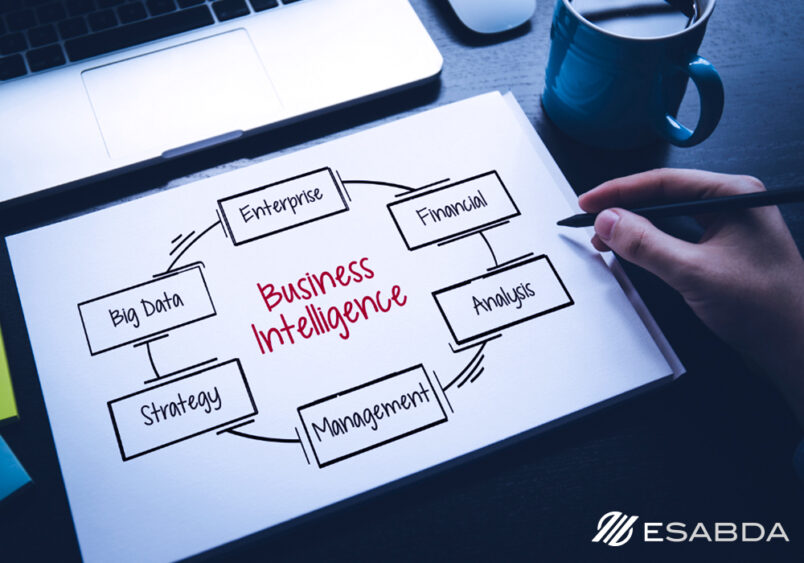By Jessica
A Business Intelligence system is probably one of the most important components used by modern business houses at present time. There aren’t many people who don’t know about business intelligence in today’s day and time. Business Intelligence refers to the strategies that many businesses and organizations use in order to analyze data. BI also helps users make the best possible business decision. There are a few major components of business intelligence (BI) systems that you should know of.
But it is not possible to just depend on the basic knowledge of business intelligence. One has to know a thing or two about business intelligence (BI) systems to know how to make them work in one’s business. This article is here to help you get an in-depth overview of business intelligence systems and their components.
What Is a Business Intelligence system?
Business Intelligence System refers to a system that assesses and transforms complicated data into meaningful and actionable information. Users can later employ it to aid in better strategic, tactical, and operational understanding and decision-making. There are many aspects of business intelligence systems like business analytics, data mining, data visualization, data tools, and infrastructure.

Business intelligence system mostly focuses on bringing out the best results that are likely to accumulate profit in an organization. A business intelligence system uses relevant data in order to increase an organization’s operational efficiency. Moreover, one of the most promising features of a business intelligence (BI) system is that it helps businesses to get insight from the raw data at the right time. There aren’t many businesses that compromise when it comes to using business intelligence systems.
In fact, one should keep in mind that as a business owner or just anyone working in an administrative environment, a business intelligence system is what they need to build their business and foster profit generation at the same time. Getting insights on the latest trends really isn’t much of an issue with the help of a business intelligence system either.
You might also like: https://esabda.com/15-best-startup-ideas-in-nepal/
What are the major components of a business intelligence system?
There are four different major components of a business intelligence (BI) system. Knowing about these components is likely to give you the benefit of knowing deeply about everything you need in a business intelligence system. The major components of a business intelligence system include:
A data warehouse
We all know the meaning of warehouse. It is a place where many important things are kept in storage. Similarly, a data warehouse is just the same as any warehouse. And, many important subject-oriented data are kept in storage in a data warehouse. The subject-oriented data includes sales, customer names, etc. Likewise, the data warehouse mostly excludes data that is not needed in decision-making. A data warehouse is an integration of many heterogeneous data sources.
The data sources have their own data protocol, and data processing is required while data warehousing. Once the data warehouse captures the data, it is not possible to change it. The data warehouse maintains data in the form of star schema, snowflake schema, and galaxy schema.
Business analytics or data management tools
Business analytics refers to the skills, technologies, and practices by which businesses can continuously explore and investigate past data in order to gain insight as well as drive business planning. Data, statistical analysis, and reporting are the main focuses of business analytics, which are used to examine and analyze business performance, offer insights, and generate recommendations to boost performance.
There are three different types of business analytics which include descriptive analytics, predictive analytics, and prescriptive analytics. Descriptive analytics tells the users what has already happened, predictive analytics tells the users what might happen and prescriptive analytics tells the user what should happen.
Tools for data management are utilized for practice development and monitoring as well as data organization, processing, and analysis. All these data are used in developing and monitoring practices. Moreover, the tools help the user to arrange the date in order to ensure efficiency and efficacy. Some of the most important data management tools include strategic planning, customer relationship management, employee engagement surveys, benchmarking, and balanced scorecard.
Business performance management (BPM) tools
Business performance management is also known as corporate performance management and enterprise performance management. Furthermore, Business performance management allows the user to manage the performance of an organization in achieving one or more predetermined goals. BPM also helps organizations track the tactics employed to achieve plan objectives. BPM makes it easier for the organization to align the employees and resources as necessary.
Business performance tools use Key Performance Indicators which are also called KPIs. KPIs consist of revenue, return on investment, overhead, and operational costs. These business performance management tools are more than necessary when a firm wants to accelerate its decision-making process and positively drive its revenues to a high.
A user interface
User interface refers to the interaction between the user and the system. When the user accesses the system, it is usually called UI or User interface. The user interface is also known as one of the most common components of a business intelligence system. This is because how the user or the programmer interacts with the system is likely to determine the results of the whole process as well.
User interface mostly denotes both digital as well as physical interaction of the user with the system. However, in business intelligence (BI) systems, the interaction mostly limits to digital ones since business intelligence tools are software used for the sake of trend insights and profit accumulation. Some of the business intelligence tools and software with the best user interface are:
Toucan Toco: https://www.toucantoco.com/en/
ClicData: https://www.clicdata.com/
NetSuite: https://www.netsuite.com/portal/home.shtml
Zoho Analytics: https://www.zoho.com/analytics/
Logi Analytics: https://devnet.logianalytics.com/hc/en-us
Looker: https://www.looker.com/
Conclusion
Along with the advancement in technologies, businesses as well as many administrative users must keep in mind that every field needs guidance and supervision from the latest technology. Hence, Business intelligence tools play a big role in making this possible. Considering the benefits one can derive from a business intelligence (BI) system, you really aren’t paying a lot for the software either.
Upon research, it was found that businesses that make good use of business intelligence tools are likely to succeed more in profitability and finding the insights and latest trends in a more rewarding way as compared to their counterparts who are not familiar with business intelligence tools. However, it is just as important for business owners and corporations to be aware of the fact that people are becoming more aware of business intelligence tools. And, there aren’t many people who do not know about BI.
Henceforth, with time, it is more than important that people know why a business intelligence system is so crucial in the growth of one’s business.
Also read: https://esabda.com/what-is-business-intelligence-a-detailed-overview/




